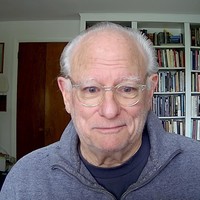Papers by MOHINI WALAVALKAR
Journal of Atmospheric Chemistry, Apr 12, 2023
Chemical Physics Letters, Sep 1, 2021
The reaction of dimethyl ether (DME) with OH radical was studied using a laser photolysis-laser i... more The reaction of dimethyl ether (DME) with OH radical was studied using a laser photolysis-laser induced fluorescence technique in the temperature range of 257 to 333 K at 30 Torr. The temperature dependent rate coefficient is represented by the expression, and atmospheric lifetime was found to be 4.7 days. To elucidate the reaction mechanism and complement the experimental work, the energies and structures of the reactants and transition states involved were determined theoretically using the G3 method. The radiative forcing and the global warming potential for 100 years time horizon of DME were estimated to be 0.03 Wm -2 ppb -1 and 0.02, respectively.

Journal of Physical Chemistry A, Aug 29, 2014
The reactivities of the Cl atom with triple-bonded molecules were examined by determining the rat... more The reactivities of the Cl atom with triple-bonded molecules were examined by determining the rate coefficients of reactions of four triple-bonded alcohols (TA), namely, 2-propyn-1-ol, 3-butyn-1-ol, 3-butyn-2-ol, and 2-methyl-3-butyn-2-ol, using the relative rate method, at 298 K. The rate coefficients (k) of reaction of the four alcohols with Cl vary in the range (3.5-4.3) × 10(-10) cm(3) molecule(-1) s(-1). These values imply significant contribution of the Cl reaction in the tropospheric degradation of TAs in the conditions of the marine boundary layer. A striking difference is observed in the reactivity trend of Cl from that of OH/O3. Although the reactivity of OH/O3 is lower with triple-bonded molecules, as compared to the double-bonded analogues, the reactivity of the Cl atom is similar for both. For a deeper insight, the reactions of Cl and OH with the simplest TA, 2-propyn-1-ol, are investigated theoretically. Conventional transition state theory is applied to compute the values of k, using the calculated energies at QCISD and QCISD(T) levels of theory of the optimized geometries of the reactants, transition states (TS), and the product radicals of all the possible reaction pathways at the MP2/6-311++G(d,p) level. The k values calculated at the QCISD level for Cl and the QCISD(T) level for OH reactions are found to be very close to the experimental values at 298 K. In the case of the Cl reaction, the abstraction of α-H atoms as well as the addition at the terminal and middle carbon atoms have submerged TS and the contribution of the abstraction reaction is found to be significant at room temperature, at all levels of calculations. Addition at the terminal carbon atom is prominent compared to that at the middle carbon. In contrast to the Cl reaction, only addition at the middle carbon is associated with such low lying TS in the case of OH. The individual rate coefficients of addition and abstraction of OH are lower than that of Cl. The negative temperature dependence of the computed rate coefficients in the temperature range 200-400 K shows that the difference in the TS energy of Cl and OH affects the pre-exponential factor more than the activation energy.
Atmospheric Environment, Mar 1, 2013
< Reports the rate coefficients of Cl reactions with1-alkenes (C6eC9) at 298 K. < Cl contributes ... more < Reports the rate coefficients of Cl reactions with1-alkenes (C6eC9) at 298 K. < Cl contributes as much as OH towards the degradation of 1-alkenes in MBL. < Increased role of H abstraction in higher alkenes. < No increase in dissociation and generation of small aldehydes (C < 4). < Major gas phase products in NO x free air are 1-chloro-2-ones/ols; enones; enols.

Atmospheric Environment, Jul 1, 2017
Tropospheric lifetimes of two lactones, gamma-valerolactone (GVL) and alpha-methyl gammabutyrolac... more Tropospheric lifetimes of two lactones, gamma-valerolactone (GVL) and alpha-methyl gammabutyrolactone (AMGBL) in terms of their reactions with two important tropospheric oxidants-OH and Cl -are estimated, after determining the respective rate coefficients of their reactions in the gas phase using relative rate method. Values of the rate coefficients of the reactions of GVL (k OH = (1.95 ± 0.58) x 10 -12 ; k Cl = 2.26 ± 0.53 x 10 -11 cm 3 molecule -1 s -1 ) and AMGBL (k OH = 1.81 ± 0.43 x 10 -12 ; k Cl = 3.42 ± 0.63 x 10 -11 cm 3 molecule -1 s -1 ) at 298 K imply that reaction with OH is the dominant reaction in the ambient conditions, and that reaction with Cl atom becomes relevant under marine boundary layer (MBL) conditions, reducing the tropospheric lifetimes to almost half. The tropospheric life times of GVL and AMGBL based on their reaction with OH under ambient conditions are comparable, 71.2 and 76.7 hrs respectively. However, the products of the reactions are found to be different. In GVL, a promising second generation biofuel component, only ring opening reactions are important, acetic acid and CO 2 being the only observed volatile products. In AMGBL, additional ring oxidized products are also formed, of which 3,4-dihydro-3methyl-2,5-furandione is the most dominant one. The absence of such ring oxidized products in GVL is assigned to the difference in the preferred position of H atom abstraction, based on the computed rate coefficients of individual channels reported in the literature.This suggests that the impact in terms of aerosol generation in the troposphere may also be different for GVL and AMGBL, which differ only in the position of methyl substitution.
Atmospheric Environment, 2014
h i g h l i g h t s g r a p h i c a l a b s t r a c t First reactivity study of dihydrofurans and... more h i g h l i g h t s g r a p h i c a l a b s t r a c t First reactivity study of dihydrofurans and dihydropyran with tropospheric oxidants. Identification of the dominant tropospheric reactions e with OH and/or O 3 . Estimation of the tropospheric lifetimes of the 3 unsaturated cyclic ethers. Influence of the position of the double bond on reactivity. Correlation of the rate coefficients with HOMO energy, for predictive purpose. O O O I I I I I I 2, 5-DHF 2, 3-DHF 3,4-DHP k OH (II) ~kOH (III) ~ 2 k OH (I) k O3 (II) ~ 14 k O3 (III) ~ 260 k O3 (I) k Cl (II) ~ k Cl (I) ~ 0.75 k Cl (III) E HOMO (II) ~ E HOMO (III) > E HOMO (I) OH˙O 3 Major tropospheric pathways for the three unsaturated ethers.

Atmospheric Environment, Sep 1, 2019
The reactions of tropospheric oxidants, Cl, OH and O 3 , with three cyclic hydrocarbons, cyclooct... more The reactions of tropospheric oxidants, Cl, OH and O 3 , with three cyclic hydrocarbons, cyclooctane, cis-cyclooctene and 1,5-cyclooctadiene, have been investigated to understand the significance of these reactions, particularly with Cl, in degradation of these hydrocarbons. The rate coefficients of reaction of Cl (k Cl ) atom at 298 K are determined as (4.5± 0.4), (4.7 ± 0.4) and (5.2 ± 0.7) × 10 -10 cm 3 molecule -1 s -1 for cyclooctane, cis-cyclooctene and 1,5-cyclooctadiene. The corresponding values of rate coefficients of reactions with OH (k OH ) at 298 K are (1.4 ± 0.2), (5.1 ± 1) and (11.1 ± 2) × 10 -11 cm 3 molecule -1 s -1 for cyclooctane, cis-cyclooctene and 1,5-cyclooctadiene, respectively and the values of k O3 at 298 K are (4.1 ± 0.8) and (1.4 ± 0.2) × 10 -16 cm 3 molecule -1 s -1 for cis-cyclooctene and 1,5-cyclooctadiene, respectively. The quoted errors include the experimental 2σ, along with the error in the reference rate coefficients. The values of k Cl of cis-M

Journal of Physical Chemistry A, Jun 10, 2016
The relative yields of products of the reaction of Cl atoms with 1-alkenes (C4-C9) were determine... more The relative yields of products of the reaction of Cl atoms with 1-alkenes (C4-C9) were determined to see whether H atom abstraction is an important channel and if it is to identify the preferred position of abstraction. The presence of all the possible positional isomers of long chain alkenones and alkenols among the products, along with chloroketones and chloroalcohols, confirms the occurrence of H atom abstraction. A consistent pattern of distribution of abstraction products is observed with oxidation at C4 (next to allyl) being the lowest and that at CH 2 groups away from the double bond being the highest. This contradicts with the higher stability of allyl (C3) radical. For a better understanding of the relative reactivity, ab initio calculations at MP2/6-311+G (d,p) level of theory are carried out in the case of 1-heptene. The total rate coefficient, calculated using conventional transition state theory, was found to be in good agreement with the experimental value at room temperature. The preferred position of Cl atom addition is predicted to be the terminal carbon atom, which matches with the experimental observation, whereas the rate coefficients calculated for individual channels of H atom abstraction do not explain the observed pattern of products. The distribution of abstraction products except at C4 is found to be better explained by reported structure activity relationship, developed from experimental rate coefficient data. This implies the reactions to be kinetically dictated and emphasizes the importance of secondary reactions.
ACS Earth and Space Chemistry
Journal of Atmospheric Chemistry

Experimental characterization of products during OH-initiated oxidation of dihydrofurans (DHF) co... more Experimental characterization of products during OH-initiated oxidation of dihydrofurans (DHF) confirms the formation of furan accompanied by the formation of HO<sub>2</sub> to be a significant channel in 2,5-DHF (21 ± 3%), whereas it is absent in 2,3-DHF. Theoretical investigations on the reaction of OH with these molecules are carried out to understand this difference. All possible channels of reaction are studied at M06-2X level with 6-311G* basis set, and the stationary points on the potential energy surface are optimized. The overall rate coefficients calculated using conventional TST with Wigner tunneling correction for 2,5-DHF and 2,3-DHF are 2.25 × 10<sup>–11</sup> and 4.13 × 10<sup>–10</sup> cm<sup>3</sup> molecule<sup>–1</sup> s<sup>–1</sup>, respectively, in the same range as the previously determined experimental values. The branching ratios of different channels were estimated using the computed rat...
Atmospheric Environment, 2020
This is a PDF file of an article that has undergone enhancements after acceptance, such as the ad... more This is a PDF file of an article that has undergone enhancements after acceptance, such as the addition of a cover page and metadata, and formatting for readability, but it is not yet the definitive version of record. This version will undergo additional copyediting, typesetting and review before it is published in its final form, but we are providing this version to give early visibility of the article. Please note that, during the production process, errors may be discovered which could affect the content, and all legal disclaimers that apply to the journal pertain.

Atmospheric Environment, 2019
The reactions of tropospheric oxidants, Cl, OH and O 3 , with three cyclic hydrocarbons, cyclooct... more The reactions of tropospheric oxidants, Cl, OH and O 3 , with three cyclic hydrocarbons, cyclooctane, cis-cyclooctene and 1,5-cyclooctadiene, have been investigated to understand the significance of these reactions, particularly with Cl, in degradation of these hydrocarbons. The rate coefficients of reaction of Cl (k Cl ) atom at 298 K are determined as (4.5± 0.4), (4.7 ± 0.4) and (5.2 ± 0.7) × 10 -10 cm 3 molecule -1 s -1 for cyclooctane, cis-cyclooctene and 1,5-cyclooctadiene. The corresponding values of rate coefficients of reactions with OH (k OH ) at 298 K are (1.4 ± 0.2), (5.1 ± 1) and (11.1 ± 2) × 10 -11 cm 3 molecule -1 s -1 for cyclooctane, cis-cyclooctene and 1,5-cyclooctadiene, respectively and the values of k O3 at 298 K are (4.1 ± 0.8) and (1.4 ± 0.2) × 10 -16 cm 3 molecule -1 s -1 for cis-cyclooctene and 1,5-cyclooctadiene, respectively. The quoted errors include the experimental 2σ, along with the error in the reference rate coefficients. The values of k Cl of cis-M

Atmospheric Environment, 2018
The reactions of 1-chlorocyclopentene with tropospheric oxidants, Cl, OH and O 3 are studied to m... more The reactions of 1-chlorocyclopentene with tropospheric oxidants, Cl, OH and O 3 are studied to measure the rate coefficients at 298 K and 800 Torr of N 2 using the relative rate method with butene, cyclopentene and butane as references. The concentrations of the organics are measured by Gas Chromatograpy technique. The measured average rate coefficient values of k Cl , k OH and k O3 (in cm 3 molecule -1 s -1 ) are (3.51 ± 1.26) x 10 -10 , (5.97 ± 1.08) x 10 -11 and (1.50 ± 0.19) x 10 -17 , respectively. In addition, the rate coefficient for reaction of OH with 1-chlorocyclopentene at 298 K and 30 Torr was also measured using an absolute method of laser photolysis-laser induced fluorescence technique, and the k OH value is found to be (6.01 ± 0.70) x 10 -11 cm 3 molecule -1 s -1 . The stable products formed during the reaction of Cl, OH and O 3 initiated oxidation of the 1chlorocyclopentene in presence of air are characterized by GCMS. The abstraction and addition products are identified among them, the latter are found to be major products. The experimental results are supported by molecular orbital calculations, and abstraction of the allylic hydrogen atoms is predicted to be the major abstraction channel. Calculations predict the preferential addition of chlorine atom to the carbon atom of the unsaturation center not having Cl attached to it. The rate coefficients of 1-chlorocyclopentene are compared with that of cyclopentene and substituted cyclopentene to understand the effect of substituent Cl on the reactivity. The measured rate coefficients have been used to calculate tropospheric lifetime of the compound to be 316, 2 and 26 h for Cl, OH and O 3 , respectively. Based on these values, the major degradation pathway of 1-chlorocyclopentene is suggested to be its reaction with OH. Atmospheric impact of these molecules is local as tropospheric lifetime (τ) < 2 h. Using the tropospheric lifetime of 1-chlorocyclopentene, and its IR absorption cross-section in tropospheric IR window and under the assumption of a well mixed atmosphere, the radiative forcing of 1-chlorocyclopentene was estimated to be 22.41 mWm -2 ppb -1 , and the global warming potentials for 20 and 100 years time horizon were calculated to be 0.01 and 0.003, respectively.

Atmospheric Environment, 2017
Tropospheric lifetimes of two lactones, gamma-valerolactone (GVL) and alpha-methyl gammabutyrolac... more Tropospheric lifetimes of two lactones, gamma-valerolactone (GVL) and alpha-methyl gammabutyrolactone (AMGBL) in terms of their reactions with two important tropospheric oxidants-OH and Cl -are estimated, after determining the respective rate coefficients of their reactions in the gas phase using relative rate method. Values of the rate coefficients of the reactions of GVL (k OH = (1.95 ± 0.58) x 10 -12 ; k Cl = 2.26 ± 0.53 x 10 -11 cm 3 molecule -1 s -1 ) and AMGBL (k OH = 1.81 ± 0.43 x 10 -12 ; k Cl = 3.42 ± 0.63 x 10 -11 cm 3 molecule -1 s -1 ) at 298 K imply that reaction with OH is the dominant reaction in the ambient conditions, and that reaction with Cl atom becomes relevant under marine boundary layer (MBL) conditions, reducing the tropospheric lifetimes to almost half. The tropospheric life times of GVL and AMGBL based on their reaction with OH under ambient conditions are comparable, 71.2 and 76.7 hrs respectively. However, the products of the reactions are found to be different. In GVL, a promising second generation biofuel component, only ring opening reactions are important, acetic acid and CO 2 being the only observed volatile products. In AMGBL, additional ring oxidized products are also formed, of which 3,4-dihydro-3methyl-2,5-furandione is the most dominant one. The absence of such ring oxidized products in GVL is assigned to the difference in the preferred position of H atom abstraction, based on the computed rate coefficients of individual channels reported in the literature.This suggests that the impact in terms of aerosol generation in the troposphere may also be different for GVL and AMGBL, which differ only in the position of methyl substitution.

The Journal of Physical Chemistry A, 2014
The reactivities of the Cl atom with triple-bonded molecules were examined by determining the rat... more The reactivities of the Cl atom with triple-bonded molecules were examined by determining the rate coefficients of reactions of four triple-bonded alcohols (TA), namely, 2-propyn-1-ol, 3-butyn-1-ol, 3-butyn-2-ol, and 2-methyl-3-butyn-2-ol, using the relative rate method, at 298 K. The rate coefficients (k) of reaction of the four alcohols with Cl vary in the range (3.5-4.3) × 10(-10) cm(3) molecule(-1) s(-1). These values imply significant contribution of the Cl reaction in the tropospheric degradation of TAs in the conditions of the marine boundary layer. A striking difference is observed in the reactivity trend of Cl from that of OH/O3. Although the reactivity of OH/O3 is lower with triple-bonded molecules, as compared to the double-bonded analogues, the reactivity of the Cl atom is similar for both. For a deeper insight, the reactions of Cl and OH with the simplest TA, 2-propyn-1-ol, are investigated theoretically. Conventional transition state theory is applied to compute the values of k, using the calculated energies at QCISD and QCISD(T) levels of theory of the optimized geometries of the reactants, transition states (TS), and the product radicals of all the possible reaction pathways at the MP2/6-311++G(d,p) level. The k values calculated at the QCISD level for Cl and the QCISD(T) level for OH reactions are found to be very close to the experimental values at 298 K. In the case of the Cl reaction, the abstraction of α-H atoms as well as the addition at the terminal and middle carbon atoms have submerged TS and the contribution of the abstraction reaction is found to be significant at room temperature, at all levels of calculations. Addition at the terminal carbon atom is prominent compared to that at the middle carbon. In contrast to the Cl reaction, only addition at the middle carbon is associated with such low lying TS in the case of OH. The individual rate coefficients of addition and abstraction of OH are lower than that of Cl. The negative temperature dependence of the computed rate coefficients in the temperature range 200-400 K shows that the difference in the TS energy of Cl and OH affects the pre-exponential factor more than the activation energy.
Atmospheric Environment, 2014
h i g h l i g h t s g r a p h i c a l a b s t r a c t First reactivity study of dihydrofurans and... more h i g h l i g h t s g r a p h i c a l a b s t r a c t First reactivity study of dihydrofurans and dihydropyran with tropospheric oxidants. Identification of the dominant tropospheric reactions e with OH and/or O 3 . Estimation of the tropospheric lifetimes of the 3 unsaturated cyclic ethers. Influence of the position of the double bond on reactivity. Correlation of the rate coefficients with HOMO energy, for predictive purpose. O O O I I I I I I 2, 5-DHF 2, 3-DHF 3,4-DHP k OH (II) ~kOH (III) ~ 2 k OH (I) k O3 (II) ~ 14 k O3 (III) ~ 260 k O3 (I) k Cl (II) ~ k Cl (I) ~ 0.75 k Cl (III) E HOMO (II) ~ E HOMO (III) > E HOMO (I) OH˙O 3 Major tropospheric pathways for the three unsaturated ethers.
Atmospheric Environment, 2013
< Reports the rate coefficients of Cl reactions with1-alkenes (C6eC9) at 298 K. < Cl contributes ... more < Reports the rate coefficients of Cl reactions with1-alkenes (C6eC9) at 298 K. < Cl contributes as much as OH towards the degradation of 1-alkenes in MBL. < Increased role of H abstraction in higher alkenes. < No increase in dissociation and generation of small aldehydes (C < 4). < Major gas phase products in NO x free air are 1-chloro-2-ones/ols; enones; enols.

The journal of physical chemistry. A, Jan 23, 2016
The relative yields of products of the reaction of Cl atoms with 1-alkenes (C4-C9) were determine... more The relative yields of products of the reaction of Cl atoms with 1-alkenes (C4-C9) were determined to see whether H atom abstraction is an important channel and if it is to identify the preferred position of abstraction. The presence of all the possible positional isomers of long chain alkenones and alkenols among the products, along with chloroketones and chloroalcohols, confirms the occurrence of H atom abstraction. A consistent pattern of distribution of abstraction products is observed with oxidation at C4 (next to allyl) being the lowest and that at CH2 groups away from the double bond being the highest. This contradicts with the higher stability of allyl (C3) radical. For a better understanding of the relative reactivity, ab initio calculations at MP2/6-311+G (d,p) level of theory are carried out in the case of 1-heptene. The total rate coefficient, calculated using conventional transition state theory, was found to be in good agreement with the experimental value at room temp...
The Journal of Physical Chemistry A, 1997
Highlights Rate constant of OH radical reaction with dimethyl ether in 257-333 K temperature ra... more Highlights Rate constant of OH radical reaction with dimethyl ether in 257-333 K temperature range. Tropospheric lifetime of dimethyl ether. Radiative forcing and global warming potential for dimethyl ether.











Uploads
Papers by MOHINI WALAVALKAR